Introduction
The Hutchinsons: Sarah, Girlie, James, Bea, Tom, c1937
My grandfather Thomas Henry Hutchinson was born in Shanghai in 1897 to Eurasian parents. He worked for Guest, Keen and Nettlefolds (GKN), a British engineering company. At the outset of the Japanese war with China in 1937, GKN sent him to Hong Kong to establish their South East Asia office in a location of relative safety. Tom, his wife Sarah, daughters Bea, Girlie, and son James arrived in Hong Kong in October 1937. They rented a flat on Prince Edward Road, above what is now the Flower Market.
When Hong Kong was captured by the Japanese in 1941, the family was not interned because they were stateless. They remained in their flat, and subsisted on what Tom managed to buy at the markets in Mongkok and Shamshuipo, while he raised chicks on their verandah, and made his own bread. He sold their belongings ranging from clothing to furniture and his photographic supplies (he was an amateur photographer) to pay for food and other necessities. Their income was supplemented by occasional remittances from his brother Fred in Shanghai, and Girlie’s salary when she started working for Dr Lum (actually Dr K.C. Lam, 268-270 Lai Chi Kok Road, Kowloon). Bea moved out of the family home upon her marriage to Y.C. in January 1943.
The diary is essentially a record of Tom’s income and expenditure, a medium through which he conveys a clear picture of their precarious hand-to-mouth existence. The currency in use was the Japanese Military Yen (¥), imposed by the Japanese occupiers. The exchange rate from October 1942 was HK$4 to 1¥, with hyperinflation from 1944.
Their diet was monotonous though nutritious, and we get some idea of the seasonal availability of various fruit and vegetables. The family sweet tooth is much in evidence from the constant purchases of sugar in its many forms, and while Tom toils over his yeast cultures and bread doughs, Girlie’s determined emulation of Marie Antoinette is delightfully uplifting.
This diary covers the period from 8 August 1943 to 29 December 1944. Tom stopped writing up his diary abruptly on this date possibly due to Allied bombing of Japanese installations nearby. The family left their flat and moved in with friends in Homantin.
The diary is tiny: it measures 6cm by 13cm, and Tom wrote in it in pencil and in increasingly minute script to conserve paper. His handwriting is difficult to read, and he often used his own system of transliterated Cantonese to record his purchases, eg Tsoong, for spring onions. Sarah was a Japanese Eurasian, so there are some transliterations of Japanese, eg Shoyu, for soy sauce, and also of Shanghainese, like Lobo for Chinese radish. I have provided a list of translations and abbreviations, and also a list of the foods that Tom managed to buy in the markets, in case you find it difficult to read his writing. Tom also wrote in shorthand occasionally, and I am indebted to Barbara Anslow for deciphering some of these passages.
The family lived in this block on Prince Edward Road, Kowloon. © T.H. Hutchinson

Tom Hutchinson's Wartime Diary is licensed under a Creative Commons Attribution-NonCommercial 3.0 Unported License.
The original diary was donated to the Hong Kong Museum of Coastal Defence.
Translations and Abbreviations
Tom spoke English mostly, plus Shanghainese and Cantonese. His wife Sarah was Japanese Eurasian, so some Japanese words were used in the home. Tom recorded what he bought in the market in English, except for the distinctly Chinese ingredients, which are translated below from his transliterations:
| Baak gwor | Ginkgo nuts |
| Ba(a)k choi/tsoi | Bok choy – Chinese cabbage with white stems |
| Baat kok | Star anise |
| Black Tai | Black bream |
| Brinjal | Portuguese/South Asian for aubergine/egg plant |
| Choi sum | Chinese flowering cabbage |
| Choong | Spring onion/scallion |
| D(a)i gon | Long white radish, possibly pickled |
| Doong Gwar | Marrow or Winter melon |
| Dow foo | Beancurd |
| Foo Yu | White fermented beancurd |
| Gai tsoi | Mustard greens |
| Gai laan | Chinese kale/Chinese broccoli |
| Gow Tsoi | Chinese chives |
| GwanDaar | ??? |
| Har zee | Shrimp eggs |
| Heen | Small clams |
| Hoong Sam Yu | Golden Thread fish |
| Kow Choi | Chinese chives |
| Kum Tsum | Golden needles: dried Day Lily flower |
| Lien Ngow | Lotus root |
| Lobo | Long white radish (Shanghai pronounciation) |
| Loong-ngan | Long An fruit |
| Lor Mai | Glutinous rice |
| Lungnan meat | Long An fruit, flesh only |
| Meen see | Fermented bean paste |
| Mo chi | Rice cakes |
| Mui gon tsoi | Mui choy is preserved mustard greens |
| Nam yu(u) | Red fermented beancurd |
| Oong Choi/Tsoi | Ipomoea aquatica, Morning Glory |
| Sargot/Sarkot | Swede |
| Shoyu | Soy sauce (in Japanese) |
| SiyangChoi | Watercress (Shanghai pronounciation?) |
| Sum shue | Root vegetable similar to yam |
| Tai – Red fish | Red coloured sea bream |
| To-foo | Beancurd |
| Toong Gwar | Marrow or Winter melon |
| Tchoong | Spring onion/scallion |
| Tseet Gwar | Fuzzy or Hairy melon |
| Tsoong | Spring onion/scallion |
| Wai sung fun | Type of flour? |
| Wong Yu | Type of fish |
| Wong Far fish | Yellow Croaker fish |
| Woo Tow | Yam |
Commonly used abbreviations:
| Blk Mkt | black market |
| c or cat(s) | Catty/catties (Chinese weight measurement: equiv to 1 1/3 lbs or 605g) |
| cab | cabbage |
| ch | chicks/chickens |
| ¢ | sometimes Catty/catties, sometimes cents/sen |
| CRB | Central Reserve Bank of China – issued CRB Yuan |
| pce(s) | piece(s) |
| SSPo | ShamShuiPo |
| sw pots/s pots | sweet potatoes |
| t | tael(s) (Chinese weight measurement: 1/16th of a Catty) |
| Y.S.B. | Yokohama Specie Bank |
| ¥ | Japanese Military Yen |
Food bought in markets
This is a list of the food items Tom managed to buy, in addition to those in the translated list. They are recorded in the order in which they first appear in the diary:
Sweet potatoes, salt pork, cucumber, oranges, rice (ration), star fruit, rice biscuits, ginger, green papaya, shark liver, bamboo shoots, salt, beef, whitebait, peanut oil (ration), tins of Golden Syrup, sugar – white and brown (ration), cube sugar, bananas, coconut oil (ration), (Irish) potatoes, false mackerel, limes, black treacle, cat fish, ray liver, bean sprouts, berries, shark, chilli, dried whitebait, persimmons, shrimp paste, dried peas, flour (ration), dried black dates, egg yolk, pork fat rendered, fried beancurd, milk, sardines, shallots, pumpkin, beef tails(?), long(?) potato flour, sweet potato flour, red rice, cakes, bran, cabbage, candy, mackerel, dried salt cabbage, banana, arrowroot(?), squid, bean paste, chilli paste, peanuts, sugar candy, sago, peppers, melon, bulgar, rice mixed with gram (beans)(?), garlic, salt duck eggs, tangerines, beef bone, salt fish(?), salt minnows, egg flakes, lettuce, tofoo residue, suet, carrots, rolled wheat, papaya, dried duck, duck, cuttlefish, kale, starch (ration), spinach, barley, eel, tomatoes, eggplant, Yellow Lable soy sauce, green peas, squash, root flour(?), curry powder, French beans, slab sugar, onions, beans, string beans, fried cakes, Tientsin cabbage, egg albumen, egg yolk powder, soya beans, dried long radish, herring, red beans, sesamum, boiled pigskin, mint, shrimps, apricots, conger eel, King fish, horse beans, plums, pork, long beans, wheat, duck eggs, beef suet, rice mac. (?), shell fish, pig’s blood, unhusked rice, pomelo, conpoy, seaweed, rolls, rice rolls, green oysters, baby yam, biscuits, small mooncakes, tins mushroom sauce, puffed rice(?), ray, mochi rice, fresh olives, lard residue, dried baak tsoi, tinned fish, pop barley, celery, cow’s foot, three Lushus Jellies.
He also bought food for the chickens they kept, such as small shrimps, gow tsoi (Chinese chives), rice bran, heen (clams), small fish, rice husks, cabbage, crabs.
The chickens provided eggs and some meat. Tom used the egg shells as a calcium supplement baked into bread. He planted peas in flower pots, also mint sprigs, and potato eyes, chilli seeds, celery.
|
|
|
|
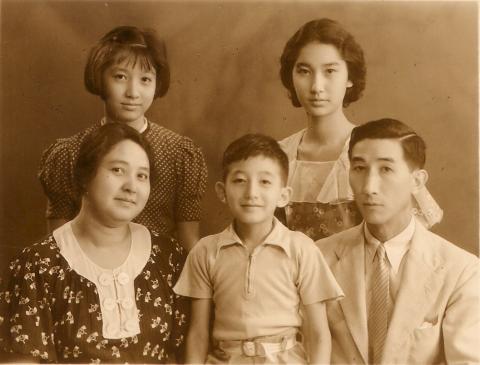
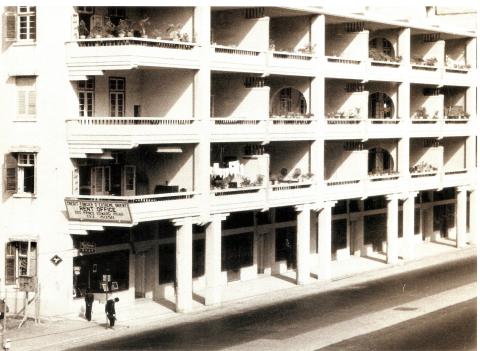
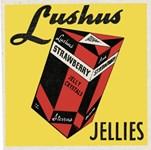
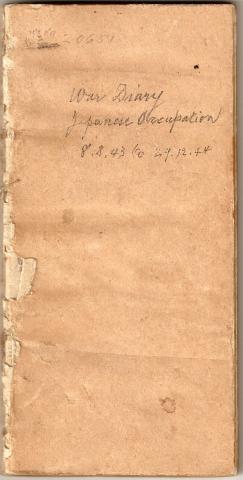

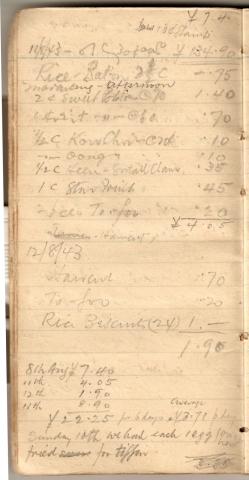
Comments
Thanks for this. A unique
Thanks for this. A unique insight into survival during the occupation.
Is there a page I've missed telling us more about Mr. Hutchinson? If not, I'd be grateful to learn more.
Tom Hutchinson's Wartime Diary
Fascinating.
Any additional info regarding your Grandpa after the war ?
As an amateur photographer he may have taken some equally fascinating pictures.
Thanks if you've just added
Thanks if you've just added this! When I accessed the page on my Android it started with 'Abbreviations and Translations' and didn't contain the very interesting information I now find (on a laptop) above.
Tom Hutchinson's Wartime Diary
I'm hoping to put up some photos once I've got the rest of the diary online.
Most of the Hong Kong photos are of family, but there are some fascinating views of the Prince Edward Road area from 1937 onwards.
I have sent his pre-1938 photos taken in Shanghai to be digitised by the University of Bristol (Prof Robert Bickers' department) and some may be added to the Historical Photographs of China website.
I'll add my thanks to
I'll add my thanks to Barbara, for sharing her family's diary with us, for persevering with this site's idiosyncracies to post the pages, and for taking the time to present all the information so well.
I'd also be interested to hear what happened to the family after liberation. Did they go back to Shanghai, or ...
Regards, David
Thanks David. The family
Thanks David. The family continued to live in Hong Kong after WWII, and were joined by Fred (mentioned in the diary) who came down from Shanghai with his family in the early 1950s. My grandfather eventually retired as General Manager of GKN SE Asia. The core of the family has remained in the Prince Edward Road area to this day, although some of us have disperse abroad....and returned.
Barbara
Schooling during WWII in Hong Kong
In his diary, my grandfather mentions paying his son James' school fees of ¥4.00 per month between August 1943 and April 1944. James attended DBS, which was closed during the war years, and used as a military hospital by the Japanese. I cannot find anything about classes being held outside of the school in To Serve and to Lead: History of the Diocesan Boys' School Hong Kong, nor is it mentioned in http://www.dbs.edu.hk/aboutdbs/DBS_Brief_History.pdf
Does anyone have information on what schooling was available during WWII in HK, and if any of it related to DBS? James was aged 14-15 at the time.
Many thanks
Barbara
Here's a brief note:All
Here's a brief note:
All schools in Hong Kong closed at beginning of the occupation. In early 1942, the Culture and Education Department ran a Teachers' Training Course that aimed to instil the Japanese culture in students who upon graduation became qualified teachers. In August 1942, over 20 primary and secondary schools reopened and the governor announced that newly edited textbooks should be used to provide "a new direction for Hong Kong education" that incorporated the "merits of Chinese and Japanese culture". School opening ceremonies included saluting the Japanese flag, singing Japanese anthems and paying respects to the Japan Imperial Palace from afar.
Page 93, Hong Kong during the Japanese occupation, by Cheng Po Hung.
Many thanks David. James has
Many thanks David. James has just said that he remembers being taught by nuns during the war, but he can't remember where it took place. The nearby Maryknoll Convent School was similarly closed, and the Sisters had to leave HK (http://www.mcs.edu.hk/mcs_1213/info_hist.htm). Perhaps there were some local nuns who stayed? Another possibility could have involved St Mary's Canossian College in TST: on 17/4/44 Tom records that he paid for "8 exercise books for St Mary's".
Barbara
Yes, St Mary's is a
Yes, St Mary's is a possibility, though I don't know if it stayed open during the occupation or not.
I'm not sure about nuns, but there were foreign priests in Hong Kong during the occupation. As Italy and Japan were allies initially, Italian priests were relatively free to move around. And even the American Maryknoll Fathers were allowed out from Stanley Camp: http://gwulo.com/node/14051
Regards, David
Schools
"In early 1943, six months after the first schools had been given official permision to start up again, only 3,200 pupils were going to school compared with 110,000 before the invasion." Pg 175, The Fall of Hong Kong, by Philip Snow.
Sargot , according to the
Sargot , according to the wikipedia, is called Pachyrhizus erosusz or Mexican Yam
Sargot
Pachyrhizus erosus - yes you're right! Amazingly was recently for sale in a local farm produce stall not far from where Tom and family were living, during WWII. I asked them what the strange bulbous root was called, and they said Sar Got. I was transfixed.
Barbara
Two Chinese translation to be added
14 April 1944 Bow Tsii =Buns
19 April 1944 Gook = a kind of Chinese Dumplings
extra translations
Many thanks! I see the "gook", but do you think the "bow tsii" might be "gow tsoi" as there is only one dot over one i, and the o might be flattened? There again, all his other "o"s are well-formed.
If you can translate GwanDad at 7/4/44, 10/4/44 and 24/4/44 I would be most grateful! In the latter case, the G in Gwandad looks like the first letter in "gow tsoi" which you saw as "bow tsii".
Barbara
Gwan Dad
Gwan Dad Not Bwan Dad when you compare with the G in Gow .
It is another spelling for Gwan Daad.
Also 12th March 1944 1c Gwan Daad C?? .25
Can you figure it out?
C?? might be Cab. = cabbage?
C?? might be Cab. = cabbage?
Gwan Daar / Gwan Dad
I think Gwan Daar C refers to "君達菜", which is Swiss chard or a local variety of Swiss chard. I guess C stands for Choi (vegetables) in Cantonese. This vegetable is not quite common these days.
Hope that it helps.
Gwan Daad
Many thanks! Mystery solved. I can see it elsewhere now with that pronunciation. Barbara
Wai sung fun
My guess of "wai sung fun" would be 衛生粉. Probably washing powder.
Schools during the Occupation
A little bit off-topic, but I note with interest the brief conversation above concerning schools in HK during the Japanese Occupation. Mention is made of the Diocesan Boys School.
I recently visited KG V school near Argyle Street in an official capacity, which was constructed in the early 1930’s I believe. I was very interested to note the information boards which the School authorities have placed on the Main Building and also the playing field pavilion.
The latter board mentions how the occupying Japanese forces used the pavilion as a “torture chamber” from 1942 - 45. It quotes a former military person from that period visiting the School many years later, reminiscing that many of his chums / colleagues etc. suffered within the confines of that building.
Surprising what you find in Hong Kong when you look around!
James Hutchinson
Hello Barbara. I came across your fascinating post whilst looking at various articles on Hong Kong's history.
I lived in Hong Kong for several years after the hand-over in 1997 and my son was born in Hong Kong.
My mother, who grew up in London during the blitz, often spoke fondly of a friend called Jim Hutchinson from Hong Kong who she met in London after the war. I think they met at a church society for international peace in the early fifties. My mother told me that Jim's family came from Shanghai and that his grandfather was Scottish. She also mentioned that he was taught by an Irish order in Hong Kong at some point - it could conceivably have been during the war as Ireland was neutral and I have read elsewhere that non-military Irish residents were not interned during the occupation.
My sister found a couple of pictures of Jim amongst my mother's old photographs; the attached link is of one him in Switzerland in 1952. There seems to be quite a resemblence to your uncle James in the family picture you posted.
https://gwulo.com/atom/36369
My mother's name was Adelaide Quinlivan.
It would be great to know whether the Jim Hucthinson my mother knew all those years ago was your uncle James.
John
James Hutchinson
Yes - that's my Uncle Jim! After finishing school (at Diocesan Boy's School, which was not Catholic) he went to London where he qualified as an accountant. He worked there, and then in South America, Australia, Singapore, and Toronto. Last month, he was admitted to hospital in Toronto after a fall, and very sadly passed away after contracting Covid-19.
Jim was a devout Catholic, and when his school was closed during the war, we think he was taught by the nuns at St Mary's Cannosian School. Do you know if the nuns there were Irish? His father had been schooled at St Francis Xavier College in Shanghai, and was prominent in their Old Boys' Association in HK.
Did your mother also mention Jim's cousin Lorraine Tarran (nee Henderson)? She emigrated to London from Shanghai, and went with Jim on retreats.Their grandfather was Eurasian, and had an American father, with Scottish roots we presume, given his surname. My mother Gladys (Girlie) Hutchinson was also in the UK during Jim's time there.
Tha k you for the photo!
James Hutchinson
Hello Barbara, Thank you comfirmng it is your uncle Jim in the photo! My excitement at finding this connection is tempered by the news about JIm. I am so sorry to hear that he just passed away from Covid-19. It must have been very difficult for the family given all the restrictions being imposed at the moment.
My mother Adelaide passed away in England in August 2015 at the age of 85. I think she and Jim must have been of similiar age. My mother was also a devout Catholic and attended a convent school in London during the war (run by a French order). She was also evacuated to the countryside for part of the war. I think the peace assoication Adelaide and Jim attended in London was called 'Pax Christi'. It seems quite likley that my mother would have met Jim's cousin but I'm afraid I don't remember her mentioning the name.
I imagine it is possible that there were Irish nuns at the Canossian school during the war. Although it is an Italian order, it is not unusual to have various nationalities amongst the community.
John
James Hutchinson
Thank you John! I passed your photo of Jim to his son, and he was very pleased to see it. Jim will be buried on Friday next to some of the family.
James Hutchinson
Hello Barbara,
I have uploaded another photo of Jim in miltary uniform. It is dated London 21-4-1952 on the back but it looks like it may have been produced in Hong Kong (there are some chinese characters embossed on the bottom right).
https://gwulo.com/atom/36383
If possible, I would like to send some flowers to Jim's funeral on the behalf of my mother. If you are OK with this, could you possibly contact me at the following address ? Spinnakerjohn@outlook.com.
Many thanks,
John
St Mary's Canossian College during World War II
Hello John and Barbara,
I just came across your posts. Canossian is an Italian order, and the nuns in Hong Kong in the 1940s were mostly Italians. St Mary's School, as it was then called, closed down in Dec 1941 when the war broke out. As Italy was an Axis country, the nuns were not sent to camps, nor was the school taken for other uses, so the nuns used the school as a refugee house. Later, the nuns were asked to operate an international school for Third Nationals. The school's name was changed to St Mary's Secondary School, but it was still managed by the same nuns.
Our archive materials show that at one point, there were some 200 students from 10 nationalities, including Portuguese, Italians, Swedes, Germans, Russians, Norwegians, Spanish etc. English and Chinese were not taught, but Japanese and French were. We are not sure if other languages were taught as well. Unfortunately, we do not have the nominal roll of students.
We do not know when exactly this arrangement ended, but the war diary of Mr Tom Hutchison shows that the Third National School existed at least till mid 1944. We do know, however, that it should have discontinued by Jan/Feb 1945, since the classrooms were then used as a makeshift elderly home for 110+ elderlies + the Little Sisters of the Poor who looked after them, as their elderly home at Ngau Chi Wan had become unsafe due to the US bombing of the Kai Tak Airfield.
A Choi